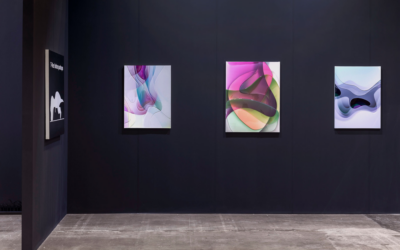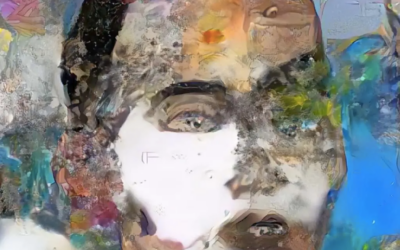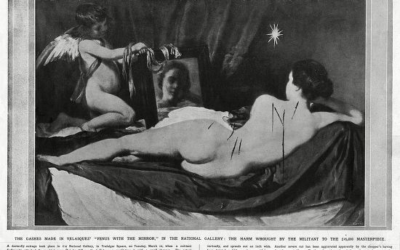Written by Harriet Maher
June 20, 2022
Now showing at Tate Britain, Cornelia Parker uses transformation, playfulness and storytelling to engage with the crucial issues of our time, from war and human rights to ecological threats and US politics.
Parker was born in 1956 in the north-west of England, where her family owned a small plot of land. She spent a lot of time working on the land with her father, who had an unpredictable temper, and the young Cornelia saw play and escape as secret and rare luxuries. She describes a childhood “on tenterhooks,” especially after her mother was diagnosed with schizophrenia in Parker’s early teens. She found a salve, however, in art, while on a school trip to London in her teenage years. Parker says her first museum visit opened her up to a whole new world of freedom and experimentation, and incited her to pursue a life of play that she felt she’d missed out on in childhood. She attended the Gloucestershire College of Art and Design, followed by Wolverhampton Polytechnic, but was overlooked by the more prestigious London colleges. Aged 26, she earned her MFA at Reading University before settling in East London.
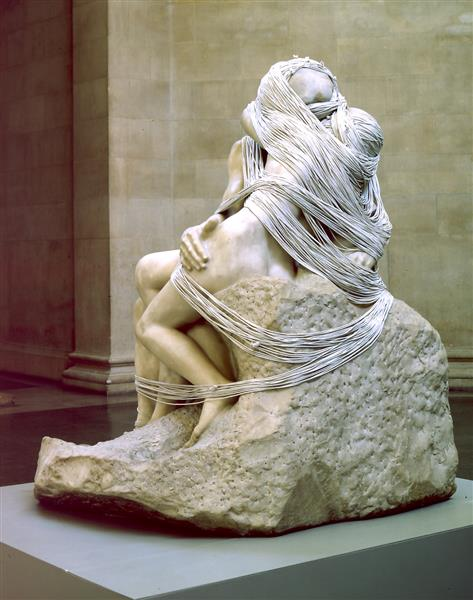
Cornelia Parker, The Distance (A Kiss With Strings Attached), 2003
I’ve been fascinated with Parker’s work for years, especially her text-based work. Through her witty, subtle interventions in the everyday, familiar objects, words and even ideas become unfamiliar. She collects simple, mundane things and turns them into something else entirely through a kind of artistic destruction. In works like Thirty Pieces of Silver (1988-89), the artist collected as much silver plate as she could from car-boot sales, markets and auctions, even wedding gifts donated by her friends. She took all the pieces and flattened them with a steam roller on a dusty road, and then reconstructed them in a striking installation organised into thirty ‘pools’ and suspended a few inches above the floor. Works like these raise a barrage of questions about the meaning of objects and materials, our relationship to the world around us, and the impermanence of all things.
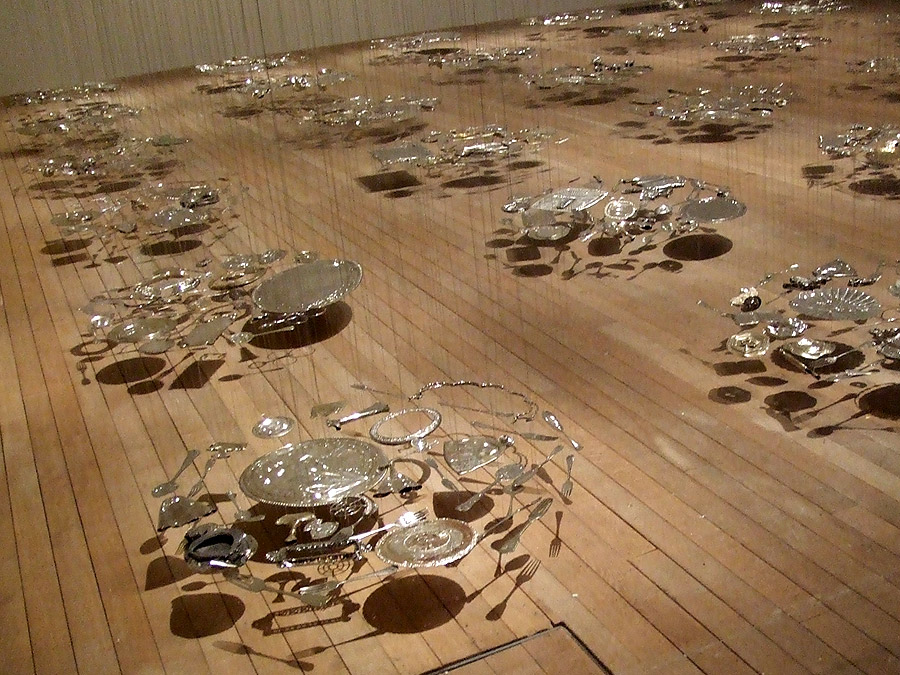
Cornelia Parker, Thirty Pieces of Silver, 1988-89
The new Tate Britain exhibition is ambitious and all-consuming, just like Parker’s art. It brings together works from the late 1980s to today, spanning installation, sculpture, embroidery, film, painting, drawing and photographs. Parker’s work is intense, excessive and on an almost inconceivable scale, taking up entire rooms, the entire gallery. Some of the works spill out of the exhibition into the Tate Britain permanent collection rooms, where they enter into a dialogue with the historical works housed there. There is a constant dialogue happening within all of Parker’s works – between the past and the present, art and object, the individual and the collective. And it’s Parker’s political engagement that has never wavered in a 35 year career, as the exhibition makes abundantly clear. Parker herself says:
“This is the time we all need to politically engage. We need art more than ever because it’s like a digestive system, a way of processing.”
Living by these words, Cornelia Parker has produced a new work to benefit Ukraine for this year’s Royal Academy Summer Exhibition: Feeling Blue (for Ukraine). The edition is time limited, for the duration of the exhibition (until 21 August). Each time a print is purchased, a yellow spot is added to the frame in the customary way commercial art galleries note when a work is sold. The print, like much of the artist’s 35-year oeuvre, is simple but powerful: a blue square, accented by the yellow spots. The striking colour scheme is immediately reminiscent of the abhorrent conflict that has come to define the first half of 2022. It’s also emblematic of Parker’s artistic practice, in its relentless adherence to a cause and unabating drive to engender change through her art.
Related Articles
Weekend Viewing: 13-15 January
It's a new year and there is a brand new lineup of shows opening around the world . Here are some of my top picks for exhibitions to check out this weekend, both online and in person. From biennials to blockbusters and everything in between, this short list will...
My Robot Could’ve Made That
There is a well-known book on modern art called “Why Your Five Year Old Could Not Have Done That.” It speaks to the once-common dismissals of abstract and ‘primitive’ styles of art as childish; art that we now prize above any other genre. But perhaps the next...
Just Stop.
Why using art as a vehicle for protest isn't the solution There’s been a lot of art in the news lately, but not necessarily for the right reasons. We’re used to seeing Picasso, Van Gogh and Munch’s names splashed across the pages of newspapers and the internet, but...

